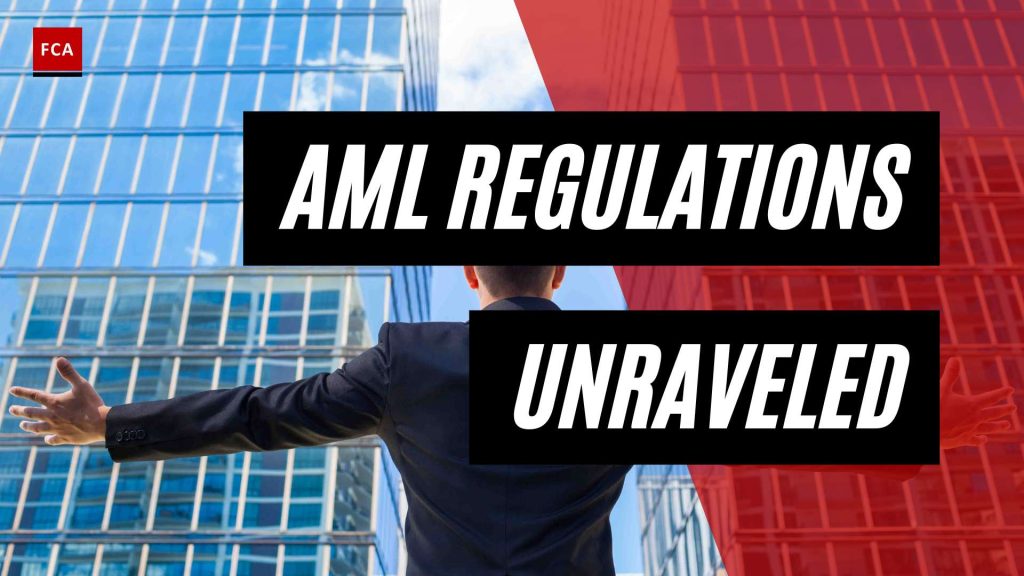Understanding Anti-Money Laundering
In the fight against financial crimes and terrorist financing, a critical defense is understanding and adhering to anti-money laundering regulations. These regulations, often abbreviated as AML, ensure financial systems are not exploited to disguise illicit funds.
Definition and Purpose of AML
Anti-money laundering (AML) regulations are designed to prevent criminals from using the financial system to obscure the illicit origins of their funds. This is achieved by requiring financial institutions to implement robust customer due diligence (CDD) procedures, conduct enhanced due diligence (EDD) for high-risk customers, and monitor transactions for suspicious activities that may indicate money laundering or terrorist financing.
A satisfactory AML program manages the traditional four pillars of AML compliance: internal controls, independent testing, ongoing training, and a dedicated AML officer. They also address a fifth pillar focusing on ongoing customer-based risk (Genpact). To meet these increasing demands, many AML programs are now relying more on sophisticated automated analytical and digital processes and tools.
Evolution of AML Regulations
The journey towards today’s AML landscape began in the United States with the enactment of the 1970 Bank Secrecy Act. This act focused on identifying the source, volume, and movement of currency related to drug traffic (Genpact). Over nearly five decades, AML has expanded significantly in scope and importance. Financial institutions now dedicate vast resources to AML compliance, and the stakes are high, encompassing public sanctions, large fines, personal accountability for noncompliance, and significant reputational risk.
The United States updated the Bank Secrecy Act in 1970 to introduce anti-Money Laundering (AML) regulations mandating financial institutions to establish AML programs to detect and prevent money laundering. Subsequent legislation, such as the USA PATRIOT Act in 2001, further expanded these requirements. The Financial Crimes Enforcement Network (FinCEN) oversees AML compliance in the U.S. and issues regulations, guidance, and enforcement actions to combat financial crimes (Dow Jones).
Understanding AML regulations is not only essential for financial institutions but also for professionals working in sectors such as AML compliance, risk management, and anti-financial crime. To further your understanding, consider enrolling in our comprehensive AML training program.
AML vs. CFT: Key Distinctions
In the realm of financial regulations targeted at preventing illicit activities, Anti-Money Laundering (AML) and Counter-Financing of Terrorism (CFT) stand out as two crucial areas. While they share the common goal of protecting the integrity of financial systems, there are key differences to note.
Conceptual Differences
AML regulations play a crucial role in the fight against financial crimes and terrorist financing. They are designed to prevent criminals from using the financial system to disguise the illicit sources of their funds. These regulations require financial institutions to implement controls to detect and prevent suspicious activities and report them to the appropriate authorities. Failure to comply with AML regulations can result in severe penalties, fines, and loss of reputation for financial institutions (Investopedia).
On the other hand, CFT regulations aim specifically at preventing and combating the financing of terrorist activities. While AML regulations generally focus on tracking and reporting suspicious transactions, CFT regulations are more focused on identifying and blocking financial transactions linked to known or suspected terrorist activities.
Regulatory Differences
On a global scale, the international Financial Action Task Force (FATF) is a key body that sets international standards for combating both money laundering and terrorist financing. This body provides guidelines and recommendations for countries to follow in implementing effective AML/CFT measures.
In the United States, the Bank Secrecy Act was updated in 1970 to introduce AML regulations to monitor and report suspicious transactions, requiring financial institutions to establish AML programs to detect and prevent money laundering. The Financial Crimes Enforcement Network (FinCEN) oversees AML compliance in the U.S and issues regulations, guidance, and enforcement actions to combat financial crimes.
The FATF, an intergovernmental organization comprising 39 member states, works to prevent international money laundering and terrorism financing by developing a set of AML/CFT recommendations. Member states must implement these through domestic legislation (Ripjar).
Understanding these key distinctions between AML and CFT is critical for professionals working in compliance, risk management, anti-money laundering, and anti-financial crime. By ensuring a solid understanding, they can better adhere to the rules and regulations in place and contribute to the fight against financial crimes and terrorism financing. For more information and guidance on AML regulations and compliance, explore our resources on AML policies, AML training, and AML awareness.
Impact of Non-Compliance with AML
The impact of not adhering to Anti-Money Laundering (AML) regulations is significant, extending beyond mere financial penalties to encompass severe reputational damage, loss of customer trust, and potential legal repercussions. This section will delve into the financial penalties and reputational consequences of non-compliance with AML regulations.
Financial Penalties
Financial penalties arising from non-compliance with AML regulations can be staggering. For instance, HSBC was fined $1.9 billion for its failure to implement adequate AML regulations in 2012.
In recent years, there has been a noticeable escalation in the severity of financial penalties levied for AML non-compliance. The European Union witnessed a more than 100% increase in AML fines in 2020 compared to the previous year, totaling €838 million (Financial Crime Academy). Similarly, the United States saw almost $3 billion in AML penalties in 2020 alone.
| Location | AML Fines in 2020 |
|---|---|
| European Union | €838 million |
| United States | $3 billion |
These figures underscore the high cost of not adhering to AML regulations, making it imperative for businesses to invest in robust AML compliance programs, comprehensive AML training, and effective AML procedures.
Reputational Consequences
In addition to financial penalties, businesses that fail to comply with AML regulations risk incurring significant reputational damage. Such reputational impacts can lead to loss of customer trust, decreased market share, and a decline in shareholder value.
The reputational consequences of AML non-compliance can be long-lasting and more debilitating than financial penalties, as they can erode a company’s brand value and competitive position. In severe cases, non-compliance can also lead to imprisonment of senior management and even the shuttering of businesses.
Given these potential repercussions, it’s clear that AML compliance is not just a regulatory requirement but also a business necessity. Companies should prioritize AML awareness and adhere to AML guidelines to mitigate the risks of non-compliance. Conducting regular AML risk assessments and maintaining stringent AML reporting procedures are also crucial steps in ensuring compliance with AML regulations.
Global AML Regulations: A Snapshot
Anti-money laundering (AML) regulations are key components of the global financial system, facilitating the detection and prevention of illicit activities. These regulations vary by jurisdiction, reflecting the unique characteristics and challenges of each financial market. This section provides a snapshot of AML regulations in the United States, the European Union, and other jurisdictions.
United States AML Regulations
In the United States, AML regulations have evolved significantly since the introduction of the Bank Secrecy Act in 1970. This legislation required financial institutions to establish AML programs to detect and prevent money laundering. Subsequent legislation, such as the USA PATRIOT Act in 2001, further expanded these requirements.
The Financial Crimes Enforcement Network (FinCEN) oversees AML compliance in the U.S., issuing regulations, guidance, and enforcement actions to combat financial crimes. In addition, organizations like the Federal Deposit Insurance Corporation (FDIC) offer resources related to AML regulations, including documentation of laws and regulations, banking industry research, financial education materials, and data tools.
For more information on U.S. AML policies, procedures, and reporting, visit our pages on AML policies, AML procedures, and AML reporting.
European Union AML Regulations
In the European Union, the Fourth Money Laundering Directive (MLD4) came into effect on June 26, 2015, setting a deadline for implementation by June 26, 2017, for member states. This directive established a unified framework for AML regulations across the EU, promoting consistency and cooperation among member states.
For more information on AML compliance in the EU, you can visit our AML compliance page.
AML Regulations in Other Jurisdictions
AML regulations in other jurisdictions continue to evolve in response to emerging risks and global trends. For instance, the UK implemented the Money Laundering Regulations in 2007, requiring all relevant businesses to appoint a Money Laundering Reporting Officer (MLRO). Similarly, Switzerland revised its Anti-Money Laundering Act on January 1, 2016, making it compulsory for firms to appoint an anti-money laundering officer. Meanwhile, Hong Kong issued the Anti-Money Laundering and Counter-Terrorist Financing Ordinance (AMLO) in 2012, which includes customer due diligence, record-keeping, and reporting obligations for financial institutions (Dow Jones).
These examples illustrate the global commitment to AML regulations and the ongoing efforts to enhance these frameworks in response to evolving threats. For more information on AML training, guidelines, and risk assessment, refer to our AML training, AML guidelines, and AML risk assessment pages.
Technological Advancements in AML Compliance
As financial institutions grapple with the rising costs of AML compliance—a 50% increase in the past decade due to Anti-Money Laundering and know-your-customer rules according to Financial Crime Academy—technology is emerging as a powerful ally. More specifically, cognitive computing and machine learning are being leveraged to streamline and enhance AML efforts.
Role of Cognitive Computing
Cognitive computing plays a crucial role in enhancing the assessment of AML risk portfolios. It offers the capacity to evaluate vast amounts of data, continuously evolve to account for new outcomes and actions, and provide a better understanding of customer profiles. Cognitive computing also enables evidence-based determinations, which are key in making informed decisions in AML processes.
The application of cognitive computing in AML compliance offers numerous benefits. These include improved efficiency in identifying suspicious activities, reduced false positives, and a more targeted approach in dealing with potential AML risks. By leveraging cognitive computing, financial institutions can better adhere to AML guidelines, thereby mitigating the risk of costly non-compliance penalties.
Machine Learning in AML
Machine learning, a subset of artificial intelligence, is another technological tool being harnessed in the fight against money laundering. It focuses on pattern detection without the need for predefined rules. This innovative approach is increasingly accepted in the financial services industry for AML compliance, improving risk scoring capabilities and offering sophisticated levels of artificial intelligence.
By using machine learning algorithms, financial institutions can analyze and interpret large volumes of data in real-time, enabling them to detect unusual patterns or activities that may suggest money laundering. This technology can also enhance the efficacy of AML reporting by providing more accurate and timely information.
Through the use of cognitive computing and machine learning, financial institutions can navigate the complexities of AML regulations more effectively and efficiently. As these technologies continue to evolve, it is expected that they will play an increasingly important role in AML compliance. For professionals working in compliance and risk management, staying abreast of these developments through continuous AML training is essential.
The Future of AML Regulations
As we look to the future, AML regulations and their associated compliance programs continue to evolve. Emerging risks and technologies are reshaping the landscape, creating new challenges and opportunities for financial institutions.
Emerging Risks and Technologies
The financial services sector has seen its compliance costs rise by 50% due to Anti-Money Laundering (AML) and know-your-customer rules in the past decade (Financial Crime Academy). The global cost of compliance for financial institutions has risen to $213.9 billion in 2021, which is 30% higher than in 2020. This underscores the increasing complexity and importance of AML compliance.
Emerging technologies are playing a pivotal role in managing these rising costs and complexities. For instance, cognitive computing is enhancing the assessment of AML risk portfolios, allowing for a better understanding of customer profiles, making evidence-based determinations, evaluating vast amounts of data, and continuously evolving to account for new outcomes and actions (Genpact).
Machine learning, with its focus on pattern detection without the need for predefined rules, is increasingly accepted in the financial services industry for AML compliance. It improves risk scoring capabilities and offers sophisticated levels of artificial intelligence (Genpact).
Evolving AML Compliance Programs
As AML regulations evolve, so too must the compliance programs that support them. Regulators across the globe are increasingly focusing on AML regulations, leading to heightened enforcement actions, increased fines, and greater scrutiny of financial institutions’ compliance programs (Financial Crime Academy).
Successful AML compliance programs of the future will need to adapt to these changes. They will need to leverage emerging technologies, implement robust risk assessment frameworks, and provide comprehensive AML training to staff. These programs will also need to be flexible, capable of responding to changes in regulatory requirements across different jurisdictions.
For instance, the European Union’s Fifth and Sixth Anti-Money Laundering Directives (5AMLD and 6AMLD) introduced key AML/CFT measures that have implications for compliance programs across the bloc (Ripjar).
In the United Kingdom, laws like the Money Laundering, Terrorist Financing and Transfer of Funds Act 2017, the Proceed Of Crime Act 2002, and the Terrorism Act 2000 mandate financial institutions to conduct risk-based checks on customers, perform customer due diligence (CDD) checks, establish ultimate beneficial ownership (UBO), screen against PEP lists and sanctions lists, and run adverse media checks (Ripjar).
In this evolving landscape, success will depend on a financial institution’s ability to adapt, innovate, and remain vigilant. Investing in AML awareness, robust AML procedures, and advanced technologies will be critical for navigating the future of AML regulations.









